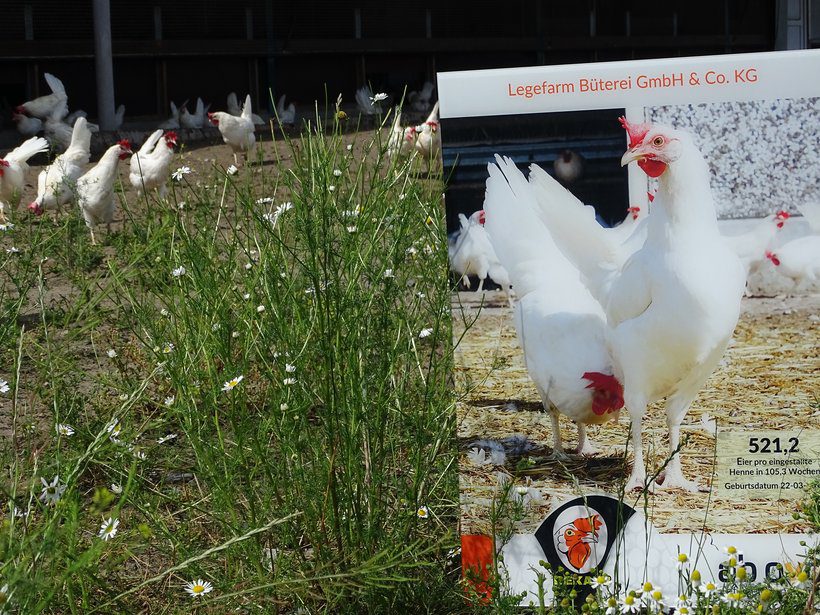
How to take good care of white laying hens and help them achieve their best performance
If you decide to breed chickens (for example, in a small farm), then first you need to decide what kind of chickens it will be – broiler breeds for meat or laying hens, to get eggs in large quantities. If the choice is on laying hens, then you need to understand that any, even the best chickens, will not give a good result without proper care for them.
Contents
What breed of laying hens should you choose?
To breed laying hens, you first need to decide on the breed. Farmers are actively breeding crosses of several breeding breeds due to the higher number of eggs they can lay. It should be remembered that this property is lost with each subsequent generation, so it is recommended update livestock, buying more chickens, not growing them.
The most popular types of laying hens
- Pushkinskaya striped and motley. The result of crossing several breeds – colored broilers, white leghorn and black-and-white australorp. One of the most famous laying hens. They differ in small size and variegated color. The vertically set tail is pronounced. They adapt remarkably to the environment. Eggs are white or cream colored.
- Lohmann Brown. The best laying hens are obtained from this breed. The first eggs are laid at the age of 135 days, then their productivity increases, reaching a maximum by 170 days. These laying hens are unpretentious, but it is recommended to change the livestock periodically. They lay brown eggs weighing 64 grams.
- Chickens of the Kuchinsky jubilee breed are also unpretentious and adapt well to any conditions. Lay at the age of six months, produce a large number of eggs of light brown color. These laying hens must be properly maintained and in no case overfed.
- hisex. A hybrid of the white leghorn. Able to produce up to 280 eggs. They are small in size (weigh no more than 1,7 kg). They carry large eggs weighing about 63 grams and with a low cholesterol content. Chickens of this breed are very sensitive to stress. They also need to be fed very well.
- Leggorn. The most popular birds of the White Leghorn breed. They begin to rush at 17-18 weeks, capable of producing 200-300 white eggs per year. The weight of the egg is 55-58 grams. The highest result is given in the first year of life, then their productivity gradually decreases. For this reason, the livestock needs to be updated periodically.
Caring for white laying hens
It should be understood that even the best layer requires appropriate conditions and care, otherwise it will be very difficult to achieve results from it.
Arrangement of a chicken coop
To breed white laying hens, you need to build a chicken coop. It should be remembered that one square meter can live comfortably no more than three or four birds. The floor should be made of boards, and a layer of sawdust or straw 5-10 cm thick should be poured over them. Contaminated places on such a litter will be easy to clean, and thicken in winter, because layers need heat to perform their duties.
In the poultry house, according to the number of hens, a wooden perch in the form of a ladder should be installed at a height of one meter from the floor. It is also necessary to place nests in secluded places. Boxes, old basins are suitable for them, the bottom of which must be covered with sawdust or straw.
Birds need lighting. For winter time, fluorescent lamps are best suited. Windows are obligatory, preferably on the south side, a grid must be installed on them, as well as sashes to close them at night. The greatest amount of light should be in the places of feeders and perches.
Bird feed can be poured onto dry litter, but it is better to make oblong feeders for this purpose so that the layers can eat at the same time. Galvanized iron or wood is best for feeders because they are easier to clean. Drinking bowls should be installed nearby.
An aviary for free-range birds should be placed in front of the chicken coop. Its minimum dimensions are a square meter for one bird, and if it is larger, it is even better.
How to properly feed white laying hens
The diet of laying hens includes grain, compound feed, as well as vitamin and mineral supplements. They are always on sale and are inexpensive.
The daily diet of a chicken should include:
- grains (corn, oats, wheat and barley)
- boiled potatoes
- mishmash
- a piece of chalk
- cake
- salt
- bone flour
- дрожжи
The feed must always be fresh, not rotten, otherwise the chickens will at best reduce egg production, and at worst they will die.
Depending on whether green grass grows in the aviary, grass from the garden, tops of vegetables, greens should be added to the bird’s food.
Birds should be fed twice a day (young laying hens can be fed three to four times), the elements necessary for life must be present in each serving. Birds should be fed early in the morning when they wake up (or after turning on the lights) and an hour before bedtime (or turning off the lights).
In order not to complicate the feeding process, you can purchase ready-made mixed combined feeds. Separately, you will need to give only greens, vegetables and grains. It is not forbidden to give the birds waste from your table. Laying hens also eat freshly cooked wet mash porridges well. But they quickly deteriorate, they are prepared immediately before feeding, not leaving until the next feeding.
Don’t fill the feeder completely. the third part of it must be left blank. Otherwise, laying hens will spill food on the bedding and trample it.
Depending on the breed, laying hens will require more or less mineral supplements, as well as the need for fasting days.
Thus, if you decide to start laying hens, you first need to decide on the breed, and then, using the recommendations for the selected chickens, equip their housing and carefully care for them. Then laying hens will bring good results and provide you with selected tasty eggs.





